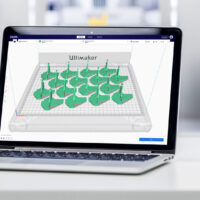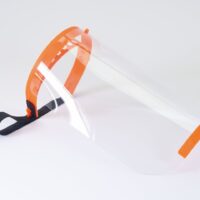Digital food storage is the name of the game in this tutorial. In a recent assignment, I sought to coach my CAD students at Virginia Tech through an Onshape modeling exercise in the kitchenware category. Our aim was to build a parametric model that was robust and could be morphed into different configurations by changing a few key dimensional values. I also wanted them to learn about the importance of space management both from consumer and point-of-purchase perspectives. I remembered how back in the day working at Rubbermaid Home Products Division, us designers accomplished this by incorporating nesting and stacking features in our designs. I thought that’s the ticket! And drafted up the assignment. To achieve both goals of morphing form and flexible parametric geometry, I introduced them to the conic tool in the 2D sketch environment. Some of you may recall that in a prior post “Make “Squircle” Shaped Objects Using the Fusion 360 Conic Tool” I wrote on modeling with conics. All the design principles I outline are relevant here. However, this time we’ll explore Onshape as an alternative modeling software.
In lieu of a post with extensive static step-by-step graphics, I’m offering up an unabridged step-by-step video tutorial. I’m sharing a video I created with my students and beginning users in mind. I did not want them or you to miss out on the slightest morsel of modeling goodness. I include commentary on the “Whys” and “Hows” from a design and parametric modeling point of view. So to the newbies, I say please watch the video in its entirety. And to the advanced, I say feel free to scrub through to your hearts’ delight!
A Word On Stacking

Stacking features are great from a consumer standpoint. They enable and promote storage configurations that are stable on shelves and inside the frig. Stacking is achieved by designing in features that inter-lock. In this model example, the base has a debossed cutout, while the lid has a raised or embossed feature. From a materials and manufacturing perspective, stacking features give rigidity to plastic parts that may otherwise be flimsy.

A Word On Nesting
Nesting is a configuration where objects of the same geometric shape fit within one another and thus save space. I remember our marketing/design manager at Rubbermaid would proclaim “Stack’em high and let’em fly.” His meaning? At retail the more product, you can display on a shelf or pack on an endcap, the greater the potential for product sell-through. With regard to geometry, nest height is linked directly with the draft angle (tilt) incorporated into the sidewall of a container. For a primer on understanding draft angle, see my posts Design Fundamentals: Draft Angles | Part 1 and my tutorial PTC Creo Parametric Draft feature Part1 (Beginner).

A Word On The Flexibility of Using Conic Sketch Sections
If you are looking for a way to quickly iterate design concepts then conics may be just the ticket! They are the chameleon of sketch entities. By changing the Rho value one moment your object can become circular, the next and oval, and in an instant a squircle which is a blend between a square and a circle! Have a look.

As you can see a whole family of product configurations can be generated in short order making design iteration snap!
Well, I’ll call this post a wrap. Enjoy the video and afterward give a go at modeling in Onshape.
Until Next time, keep learning! – SkillCoach







